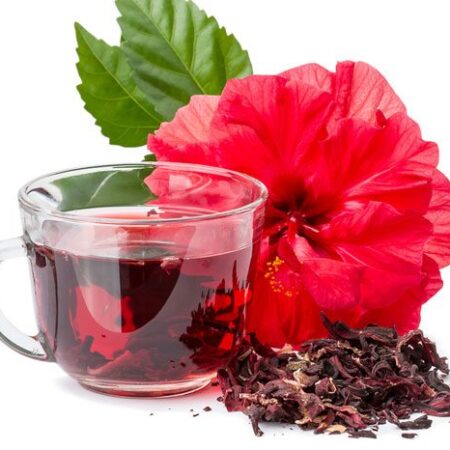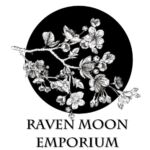What is Hibiscus?
Hibiscus is a genus of flowering plants in the mallow family, Malvaceae. The genus is quite large, comprising several hundred species that are native to warm temperate, subtropical and tropical regions throughout the world. Member species are renowned for their large, showy flowers and those species are commonly known simply as “hibiscus”, or less widely known as rose mallow. Other names include hardy hibiscus, rose of sharon, and tropical hibiscus. With all of that said, what an you actually do with Hibiscus?
Hibiscuses are far more than just pretty hothouse flowers.
- Hibiscus flowers grow on shrubs or trees that can reach 15 feet tall.
- Hibiscus flowers are sometimes called rose mallows because they are members of the mallow plant family.
- Trying to attract hummingbirds to your garden? Plant red hibiscus flowers.
- Any color of hibiscus attracts butterflies and moths because the caterpillars of many species eat them.
1. Hibiscus Tea: So many benefits so little time!
Everyone is familiar with the beautiful red cup that this amazing herb provides. However, did you know it is also good for you?
From WebMD:
- High blood pressure. Most early research shows that drinking hibiscus tea for 2-6 weeks decreases blood pressure by a small amount in people with normal or high blood pressure. Some early research shows that drinking hibiscus tea might be as effective as the prescription drugs captopril and more effective than the drug hydrochlorothiazide for reducing blood pressure in people with slightly high blood pressure.
8 Amazing Health Benefits of Hibiscus Tea for Women – Women’s Tribe

Things to be aware of with Hibiscus:
- Diabetes: Hibiscus might decrease blood sugar levels. The dose of your diabetes medications might need to be adjusted by your healthcare provider.
- Low blood pressure: Hibiscus might lower blood pressure. In theory, taking hibiscus might make blood pressure become too low in people with low blood pressure.
Hibiscus tea has a flavor profile that includes fruity, sweet, sour, and astringent notes. The tea is often compared to cranberries due to its tart yet sweet flavor. The tea is frequently brewed hot, but also makes an excellent iced tea. Because of this, hibiscus is often used to mask flavors of other more unpleasant medicinal teas. Personally I like to add it to detox teas, it makes them so tasty! And it is loaded with Vitamin C!
2. Dried Hibiscus: Flavor Punch!
 Dried hibiscus is edible, and it is often a delicacy in Mexico. It can also be candied and used as a garnish, usually for desserts. It can also be used to marinades, sauces and more! Not only does it imbue any delicacy with it’s beautiful color, but the flavor profile of hibiscus makes it so that it can be used in both sweet and savory dishes. Want to get even more creative? Use the recipe below to try delicious Hibiscus Margaritas!!
Dried hibiscus is edible, and it is often a delicacy in Mexico. It can also be candied and used as a garnish, usually for desserts. It can also be used to marinades, sauces and more! Not only does it imbue any delicacy with it’s beautiful color, but the flavor profile of hibiscus makes it so that it can be used in both sweet and savory dishes. Want to get even more creative? Use the recipe below to try delicious Hibiscus Margaritas!!
It is probably one of the only plants whose petals loaded with organic acids can be compared to a fruit and used as such. Its food purposes are known practically all over the world. In East Africa, this variety of hibiscus is very popular and its leaves are eaten raw and cooked like vegetables. In East Africa it is used to cure a cough, in Guatemala for a hangover, in Senegal to lower blood pressure, in India, Africa and Central America as a diuretic to stimulate bile production and lower fever.
3. Hibiscus for your Hair? Yup!
Hibiscus is popularly known as ‘gudhal’ in ayurvedic practice, and this is the most beneficial ingredient for hair. Hibiscus helps hair growth, itchy scalp, strengthens hair, makes it thicker and more full of life! Here are some ideas for using Hibiscus in your hair:
Using Hibiscus on its own
Mix enough Hibiscus powder with water or tea and apply to damp clean hair. Leave it undisturbed for few minutes and latter add 1 teaspoon of coconut oil, coconut milk and yogurt and leave it for another 30 minutes. Rinse off thoroughly with warm water.
Hibiscus as a cleanser:
Grind the hibiscus and make a thick paste. Massage your hair with this paste and leave it for 3 minutes. Rinse off with water.
Hibiscus Hair oil:
Take a pan and pour some coconut oil to it, allow it to boil for few minutes. Crush few hibiscus plants and add it to the heating oil and let it boil for few more minutes. If you see the oil becoming a bit reddish in color, turn off the heat and add some more crushed hibiscus leaves. Strain the oil and use it for daily!
Hibiscus conditioning mist:
This is a very easy process to prepare hibiscus conditioner at home. All you need is hibiscus flower and water. Take 1-2 cups of water and allow it to boil for few minutes. Crush some hibiscus flower and add it to the boiling water. Once the water turns red, your conditioning mist is ready to be used. Add the concentrate to a spray bottle and use it whenever you wish!
4. Hibiscus has been around for a millenia and more!
he English word “hibiscus” comes almost directly from the Greek word “hibiskos.” The flowers received their name from Pedanius Dioscorides, author of one of the few complete manuscripts from Roman times, the five-volume De Materia Medica. Disocorides was not only a botanist, but also a doctor in the Roman army.
The exact origin of Hibiscus rosa-sinensis is unknown, although it has been cultivated in China, Japan and the Pacific islands for a long time. Two white-flowered species, Hibiscus arnottianus and Hibiscus waimeae, are believed to be native to Hawaii.
 In Hawaii
In Hawaii
The hibiscus is Hawaii’s state flower. This yellow flower is striking and beautiful. The vivid color signifies delicate beauty and joyfulness. The Hawaiian hibiscus shrubs bloom almost every day, but the blossoms only last for a day. Traditionally, the flower is worn behind one ear to signify whether the wearer is romantically attached or single. Wearing the flower behind the left ear indicates that a woman is in a relationship and is uninterested in attracting a man, whereas tucking the blossom behind the right ear announces that a woman is open to promises. The showy, vividly colored blooms of the hibiscus signify “delicate beauty.”
In India
Flowers are a main offering to the gods in religious ceremonies. (Hindu gods will also be coaxed by clothing, jewels, perfumes, music, dance, betel and fruit, which are all present in some form during a traditional puja). In Hinduism, gifts to the gods are often in the same spirit as gifts we would offer to one another; giving flowers during a religious ceremony becomes a sign of respect and love, much as it does when we give these items to each other.
The gods are associated with specific flowers. The hibiscus belongs to Kali, a manifestation of primordial energy. She represents empowerment, and with that, admittedly, comes destruction, making her a fierce goddess. To understand why she is tied to the hibiscus requires delving into a bit of mythology.
Kali is form of Devi, the supreme mother in Hinduism. Devi was willed into existence by the gods, who each gave a piece of themselves to create her, and when she was fully formed, they—the gods—worshipped her in part because she was a perfect embodiment of all of them. This representation was somewhat self-serving: They had been at war with the demon king Mahishasura. During a break in the battle, Mahishasura declared himself Ruler of the Universe and began to march on Heaven to claim his prize with an army of demons. The gods created Devi out of the best of each of them to defend them, and gifted her with things that were sacred to them:
Shiva gave her a trident drawn forth from his own, Vishnu a powerful discus, and Indra, the king of the Gods, gave her a thunderbolt identical to his own. Surya, the sun God, bestowed his rays on all the pores of her skin, and Varuna, god of the ocean, gave her a divine crest jewel, earrings, bracelets and a garland of unfading lotuses.
So armed, she met the army of Mahishasura and slaughtered them. She met Mahishasura himself and killed him after a fierce battle. So great was her fury that though the fight had ended, she continued to rage through the battlefield. In giving her so many aspects, the gods had also given Devi many forms. Consumed by rage, Devi was had fully given herself over to an aspect of her personality tied to Kali, a goddess known for destruction. The gods realized they needed to stop her, but they were all were afraid. Shiva, the god of time and change (Kali’s male counterpart), went down to the battlefield, and laid down. Kali continued to dance until she looked down and realized she was stepping on Shiva. She was embarrassed because in that form, Shiva was a her husband. She withdrew her rage and to demonstrate her shame, stuck out her tongue, which is how she is often depicted.
The red hibiscus is representative of Kali’s tongue. But it should not be mistaken for her shame. The hibiscus is symbolic of the blood lust that possesses her. As she represents a form of energy, this blood symbolism becomes life-affirming because it ties her to the life forces that pulse in all of us.
In The Americas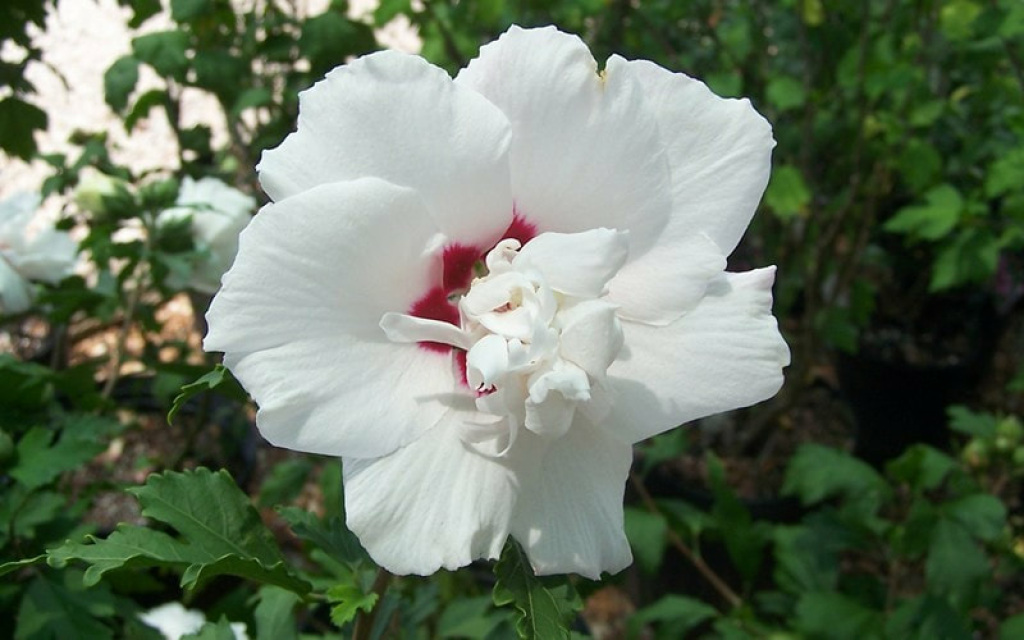
Agua de flor de Jamaica, also called agua de Jamaica and rosa de Jamaica, is popular in Mexico, Central America, and parts of South America and the Caribbean. It is one of several common aguas frescas (fresh waters), which are inexpensive beverages typically made from fresh juices or extracts. Jamaica and other aguas frescas are commonly found in taquerias, or other Mexican restaurants. It is usually prepared by steeping the calyces, along with ginger (in Jamaica), in boiling water, straining the mixture, pressing the calyces (to squeeze all the juice out), adding sugar, sometimes clove, cinnamon and a little white rum (in Jamaica), and stirring. It is served chilled, and in Jamaica this drink is a tradition at Christmas, served with fruit cake or potato pudding.
In Panama, both the flowers and the drink are called saril (a derivative of the English word sorrel). It is prepared by picking and boiling the calyces with chopped ginger, sugar, clove, cinnamon, and nutmeg. It is traditionally drunk around Christmas and Chinese New Year, diverging from Mexico and Central America and much more in line with the Caribbean, due to the strong West Indian influence in Panamanian culture especially in Panama City and most of Panama’s Caribbean coast.
In the English-speaking Caribbean, the drink, called sorrel, is made from the calyces, and it is considered an integral part of Christmas celebrations. The Caribbean Development Company, a Trinidad and Tobago brewery, produces a Sorrel Shandy in which the tea is combined with beer. Guatemala’s K’iche´ (one of the Mayan ethnic groups) used it to cure rubella
In American soul-food culture, hibiscus tea is included in a category of “red drinks” associated with West Africa, and is commonly served in soul-food restaurants and at African-American social events.
In Africa
An ancestral magic plant in Africa, the karkadé (hibiscus tea) would have the power to awaken sexual desire, love and divination. In this way, the buttons were burned during love rituals, braided and used as garlands during wedding ceremonies. In Egypt and Sudan, wedding celebrations are traditionally toasted with a glass of hibiscus tea.Its name “bissap” comes from the deformation “wolof” (language spoken in Senegal) of the word “bissab” which literally means the act of carnal love. in front of a bowl of water where hibiscus flowers floated.
Karkadé is served hot or chilled with ice. It is consumed in North Africa, especially in Egypt and Sudan. On a typical street in central Cairo, many vendors and open-air cafés sell the drink. In Africa, especially the Sahel, hibiscus tea is commonly sold on the street and the dried flowers can be found in every market. Variations on the drink are popular in West Africa and parts of Central Africa. In Senegal, bissap is known as the “national drink of Senegal”. Hibiscus tea is often flavored with mint or ginger in West Africa. In Ghana it is known as “sobolo”and “zobo” in Nigeria.
In Southeast Asia
In Thailand, most commonly, roselle is prepared as a cold beverage, heavily sweetened and poured over ice, similar to sweetened fruit juices. Plastic bags filled with ice and sweetened ‘grajeab’ can be found outside of most schools and in local markets. It is less commonly made into a wine, sometimes combined with Chinese tea leaves, in the ratio of 4:1 by weight (1/5 Chinese tea). The beverage is consumed in Malaysia and Indonesia as well. It is also cultivated for its ornamental aspect and appreciated since antiquity.
In Europe
Hibiscus was introduced to the European continent in the 12th century thanks to the Moors of Spain, and in America in the 17th century by the slaves.
In Italy, hibiscus tea, known as carcadè or Italian tea, is usually consumed hot, often with the addition of sugar and lemon juice. First introduced from Eritrea, it was widely used as a tea substitute when the country was hit by trade sanctions for its invasion of Abyssinia. In other European countries, it is often as an ingredient in mixed herbal teas, (especially with malva flowers or rose hips in the mix, to enhance colouring), and as such, more commonly used than recognized.
 5. Making Magick with Hibiscus!
5. Making Magick with Hibiscus!
Due to its long history of beauty and attraction in many cultures around the world, Hibiscus is generally most used in spells for love and attraction. The beautiful color, and esthetic beauty of the flower itself has lent itself to many stories of attracting and keeping love strong. You can carry the herb by itself in a small pouch to attract love into your life. You can also use it in honey and love jars.
Hibiscus also helps to open and enhance psychic ability. Take hibiscus tea before bedtime and set your intention before bedtime to improve lucid dreaming. Hibiscus tea can also help you develop your psychic abilities – take it before meditation to enhance communication with spirit guides and astral projection. Hibiscus is a Sun/Venus plant which explains it’s amazing attraction abilities.
Hibiscus is a main component of Alder Moon Tea – a tea used to improve spirituality and wholeness of being:
Alder Moon Tea
Equipment
- Tea Steeper
Ingredients
- 1 part Linden Leaf Dried
- 1 part Hibiscus Flower Dried
- 2 tbsp Cream or Milk
- 1 Splash Cranberry Juice
Instructions
- Generally, I keep the Linden and Hibiscus blend in a jar. I generally steep that as I would normal tea, and once it is done, I add the cranberry juice and cream. Tastes amazing cold as well!
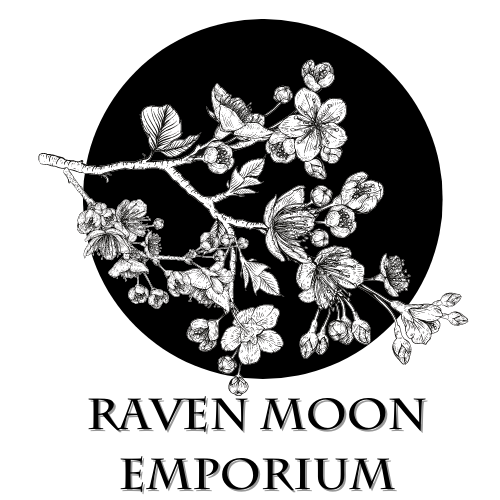

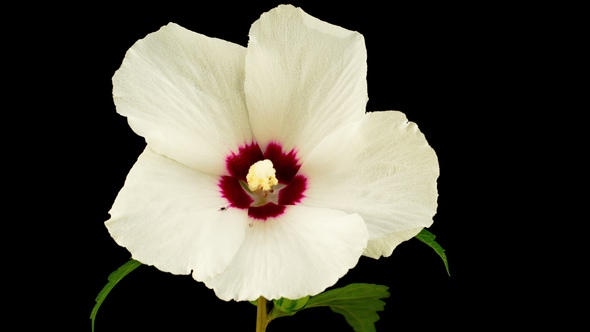

 5. Making Magick with Hibiscus!
5. Making Magick with Hibiscus!